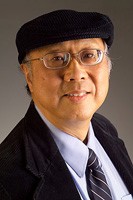
【百家大講堂】Statistical Signal Processing: From Euclid to Riemann(統計信號處理:從歐氏空間到黎曼流形)
講座題目:Statistical Signal Processing: From Euclid to Riemann(統計信號處理:從歐氏空間到黎曼流形)
主 講 人:Professor Kon Max Wong(加拿大皇家科學院院士🎧📬、加拿大工程院院士👩🏿🚀,IEEE終身院士)
時 間🧎♀️:2018年3月23日上午9:00
地 點🏌🏽♀️🏋🏼♀️:意昂官网中關村校區研究生教學樓101報告廳
報名方式:掃描二維碼報名

主辦單位:意昂平台
承辦單位:信息與電子學院-分數域信號與系統北京市重點實驗室
【Abstract】
Often, the objective of signal processing is to extract information from a selected feature of the processed signal. With its rich information on the covariance between the elements, the power spectral density (PSD) of a signal is a sought-after candidate for such a feature. The conventional metric for measurement for the PSD matrices in signal procesing, however, is the Euclidean distance.owever, H In this talk, we reason that PSD matrices have structural constraints and describe a manifold in the signal space. Thus, the widely used Euclidean distance may not be appropriate. A more suitable measure is the Riemannian distance on the manifold. We examine the geometry of the PSD manifold and introduce two closed-form Riemannian distances (and their weighted versions) between PSD matrices on the manifold. Examples of applying these new measures in signal processing are presented: 1) Classification of EEG signals in the determination of a patient’s sleep state, 2) detection of narrowband sonar signals, and 3) optimum signal design for MIMO radar. In all these cases, the results are highly encouraging, having accuracies greatly improved from those using other measures.
【Biography】

Kon Max Wong received his BSc(Eng), DIC, PhD, and DSc(Eng) degrees, all in electrical engineering, from the University of London, England, in 1969, 1972, 1974 and 1995, respectively. He started working at the Transmission Division of Plessey Telecommunications Research Ltd., England, in 1969. In October 1970 he was on leave from Plessey pursuing postgraduate studies and research at Imperial College of Science and Technology, London. In 1972, he rejoined Plessey as a research engineer and worked on digital signal processing and signal transmission. In 1976, he joined the Department of Electrical Engineering at the Technical University of Nova Scotia, Canada, and in 1981, moved to McMaster University, Hamilton, Canada, where he has been a Professor since 1985 and served as Chairman of the Department of Electrical and Computer Engineering in 1986–87, 1988–94 and 2003−08. Professor Wong was on leave as Visiting Professor at the Department of Electronic Engineering of the Chinese University of Hong Kong from 1997 to 1999. He held the Canada Research Chair in Signal Processing from 2007-2014 and is at present Professor Emeritus at McMaster University, Canada and Distinguished University Professor at Zhengzhou University, China. His research interest is in signal processing and communication theory and has published over 240 papers in the area.
Professor Wong was the recipient of the IEE Overseas Premium for the best paper in 1989, and is also the co-author of the papers that received the IEEE Signal Processing Society “Best Young Author” awards of 2006 and 2008. He is a Life Fellow of IEEE, a Fellow of the Institution of Electrical Engineers, a Fellow of the Royal Statistical Society, and a Fellow of the Institute of Physics. Since 2007, he has also been elected as Fellow of the Canadian Academy of Engineering as well as Fellow of the Royal Society of Canada. He was an Associate Editor of the IEEE Transaction on Signal Processing, 1996–98 and served as Chair of the Sensor Array and Multi-channel Signal Processing Technical Committee of the IEEE Signal Processing Society in 2002–04. Professor Wong was the recipient of the Alexander Von Humboldt International Research Award in 2010 and of the McMaster Engineering Research Achievement Award in 2011.

